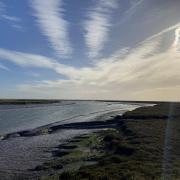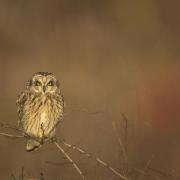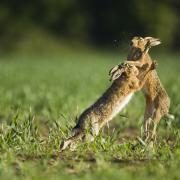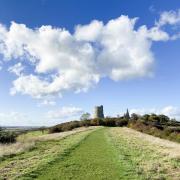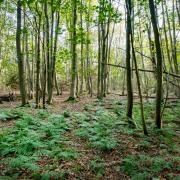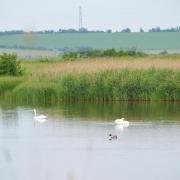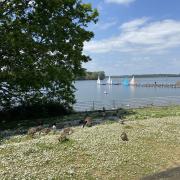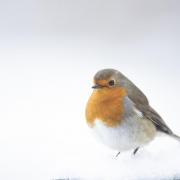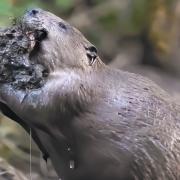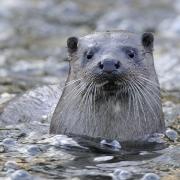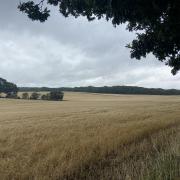Andrew Fallan shares his expertise on Essex wildlife with us, sharing his views on the conservation and enivornmental issues that we face in the county and across the country
I am very much a believer that anyone can take an interest in wildlife, with even the most modest of gardens being an ideal place to get started. Perhaps the most obvious of our garden creatures to be enjoyed are the birds that have very much made themselves at home in these increasingly important wild havens, from starlings to song thrushes, robins to house sparrows or from blackbirds to blue tits. And there is far more to these garden visitors than many would assume, with our most familiar, everyday species – even those that may be regarded by some as boring – proving surprisingly beautiful. At the same time, there are always more unusual birds waiting in the wings, ready to surprise, delight or awe us with an unexpected encounter.
Perhaps our best known garden bird is the humble house sparrow, whose characteristic chirruping, delivered enthusiastically from gutters and rooftops, has formed the soundtrack to many an afternoon spent lazing on the lawn or pottering in the shed. It is tempting to think that this species is both drab in appearance and so ubiquitous as to be of little interest, but this simply isn’t true. Quite apart from the fact that they are rather handsome, especially the males with their silvery-grey caps and coal-black bibs, these charming little birds have also suffered a drastic population decline in recent decades, so we really can’t afford to take them for granted.
It’s a similar story with starlings, whose beleaguered UK breeding population is boosted in winter by millions of migrants escaping harsher conditions on the Continent, with some of these incomers undoubtedly being the birds you see in your garden. Although many people regard starlings as dull and uninspiring, their glossy iridescent sheen forms a living kaleidoscope of vivid colours, while their gregarious nature is responsible for one of the great spectacles of the natural world, known as a ‘murmuration’, with birds flocking together and pulsating across the sky in their thousands, even millions, at winter roost sites. I have been lucky enough to see this with my own eyes on the Somerset Levels, also observing such behaviour, if on a decidedly smaller scale, on Southend seafront.
More obviously colourful are the blue tits and great tits that gather at the garden bird feeders, where they may be joined by coal tits, long-tailed tits, greenfinches and goldfinches. On the ground, chaffinches, dunnocks, song thrushes and blackbirds will forage for titbits of food, while robins and wrens – the former tiny and pert-tailed, the latter plump and Christmassy – flit about in trees and shrubs in search of insects. Although most of us have a soft spot for robins, especially at this time of year, it seems that even our most eye-catching garden birds are often overlooked in favour of more glamorous wildlife, with the result that we miss out on the incredible beauty that is right under our noses.
Nevertheless, with a bit of luck you may also happen upon more unusual species in your garden. Nuthatches and siskins will sometimes put in an appearance at bird feeders, taking their rightful place in the pecking order, while the daddy of them all, the great spotted woodpecker, makes for quite a sight as it swoops in to dominate the proceedings. Among our winter visitors, you may spot a brambling picking about on the floor, looking like an orangey version of the chaffinches they often associate with, while redwings and fieldfares – delightfully attractive thrushes from Scandinavia – will feast on berries and fallen fruit.
Another refugee of Scandinavian winters is the somewhat scarce waxwing, which, with its exquisite hues and bold crest, is one of the most stunning and exotic-looking birds you will ever come across. Despite this, they will plunder berry trees in the most humdrum of locations, including, somewhat bizarrely, supermarket car parks, for which they seem to have quite a liking. In the town of Pitsea, part of Basildon’s urban sprawl, I have seen them in the Tesco car park and also on a busy roundabout outside Lidl, while just down the road in Corringham, where I grew up, my parents once spotted some in a small tree right outside their front garden.
There really is no telling what birds you might see in your garden, especially if you put food out for them, which in winter could mean the difference between life and death. You may even be in for the performance of a lifetime if one of nature’s most awesome predators, the sparrowhawk, which also needs to find food, decides to pay a visit, attracted by the buffet of small birds on offer. w
Find out more
For more information on feeding the birds in your garden, including important precautions, go to the RSPCA website.
Andrew Fallan is the author of Winging It - Birding for low fliers, published by Brambleby Books, and is currently living in Southend. You can read more from Andrew in Essex Life as he explores our more spectacular species and the wilder locations of Essex as part of this regular monthly column.






